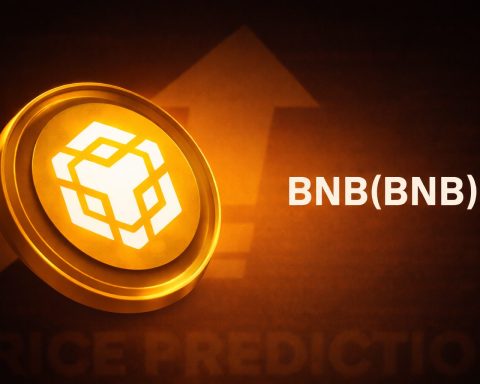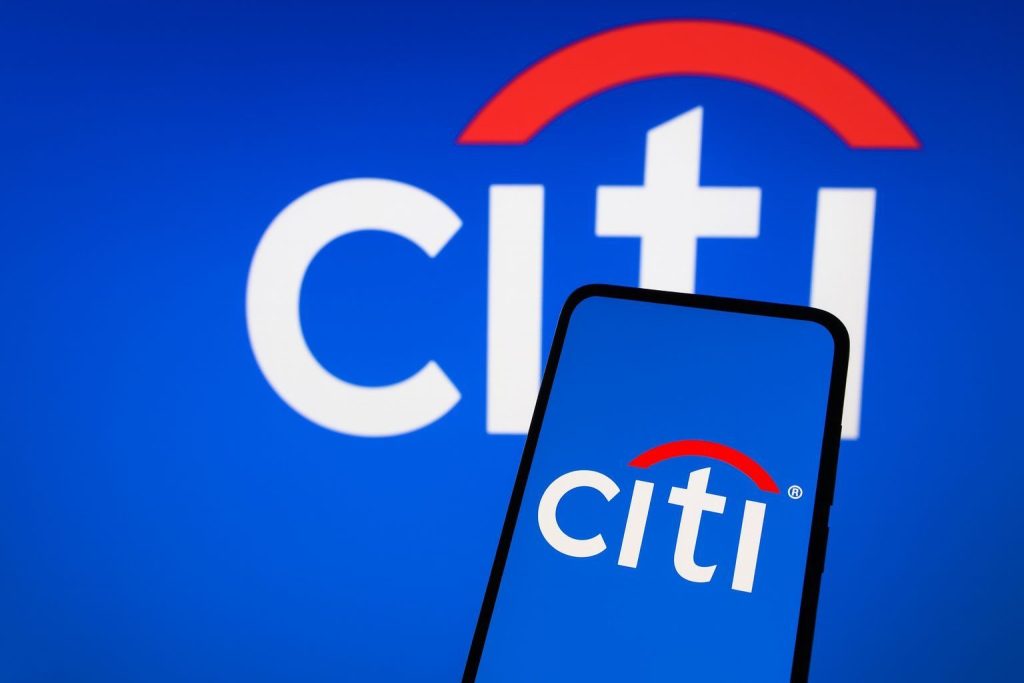DoorDash, Inc. (NASDAQ: DASH) heads into Wednesday, November 26, 2025 under a bright but complicated spotlight. The stock has bounced sharply off its recent lows, yet it’s still trading far below the highs it reached in October. At the same time, the company is grappling with a recent data breach and an $18 million legal settlement, while signing a world‑first gig‑worker pay deal in Australia, launching a big holiday ad campaign, and doubling down on AI and retail partnerships.
For investors watching DoorDash stock today, the key story is how all these moving pieces balance: strong growth and bullish analyst targets on one side, heavier regulatory, legal and security overhangs on the other.
DoorDash (DASH) stock price snapshot
As of the close on Tuesday, November 25, 2025, DoorDash stock finished at $195.49, up 3.94% (+$7.41) on the day with after‑hours trading nudging it to about $195.58. [1]
That move is part relief rally, part dead‑cat bounce:
- Over the last 30 days, DASH is still down about 26%, reflecting the market’s harsh reaction to its November earnings and spending plans. [2]
- Over the past 12 months, shares remain roughly 9% higher, helped by strong growth and earlier optimism about the Deliveroo acquisition and margin expansion. [3]
- From its mid‑October peak near $285.50, DoorDash is now about 31% below its high, underscoring how quickly sentiment flipped after Q3 results. [4]
Valuation is still rich by traditional standards. Data compiled by Eulerpool shows DoorDash trading at roughly 74x 2025 earnings and about 5.9x sales, with consensus estimates calling for about $13.6 billion in revenue and $1.1 billion in profit this year. [5]
Why the stock sold off: Q3 2025 earnings and a big 2026 investment cycle
DoorDash’s current price action is best understood through the lens of its third‑quarter 2025 results, reported on November 6.
On the surface, the numbers were very strong. For Q3 2025, DoorDash reported: [6]
- Total Orders up 21% year‑on‑year to 776 million
- Marketplace GOV (gross order value) up 25% to $25.0 billion
- Revenue up 27% to $3.4–3.45 billion
- GAAP net income up 51% to $244 million
- Adjusted EBITDA up 41% to $754 million, with net revenue margin improving to 13.8%
However, profits came in below Wall Street expectations, and DoorDash simultaneously laid out plans to boost 2026 investment by “several hundred million” dollars, particularly in technology, platform integration and autonomous delivery. Reuters and other outlets reported that total expenses jumped about 23% in the quarter, contributing to the earnings miss and sparking fears that near‑term margins would be squeezed. [7]
The market’s verdict was brutal:
- On November 6, the stock plunged 17.45% in a single session, its steepest drop on record, closing at $196.46 from $238 the day before. [8]
- The selling continued into mid‑November, ultimately dragging the share price from the $260–285 range in October to the high‑$180s / low‑$190s.
In other words, today’s price near $195 reflects an awkward truce: investors accept the growth story, but many are still recalibrating how much short‑term margin pain they’re willing to tolerate to fund DoorDash’s aggressive expansion into new markets, verticals and technologies.
Fresh headline: a “world‑first” minimum pay deal for Australian delivery workers
The most important new development in the last 24 hours for DoorDash stock comes from Australia, where regulators and the company have reached a landmark agreement on minimum pay for gig‑economy couriers.
On November 25, Reuters reported that Uber Eats and DoorDash struck a draft deal with Australia’s Transport Workers’ Union that would: [9]
- Guarantee delivery workers at least A$31.30 (~US$20.19) per hour, roughly 25% higher than what many couriers currently earn
- Align pay with the minimum wage for casual workers in Australia
- Require platforms like DoorDash to provide accident insurance, more transparency over work records and better information about each job
- Take effect from July 1, 2026, if the Fair Work Commission (FWC) approves the agreement
The Guardian described the deal as a “world first” in terms of setting legally enforceable minimum standards for food‑delivery gig workers, albeit with some caveats: idle time between deliveries is not fully covered, and penalty rates for weekends or holidays are not automatically included. [10]
What it means for DoorDash stock:
- Higher operating costs in Australia. DoorDash will face structurally higher labor costs in one of its important international markets. If it absorbs most of the cost, margins compress; if it passes it on through higher fees or menu prices, order volumes could be pressured.
- Regulatory precedent. As Australia’s deal is explicitly framed as “world‑leading,” it may embolden regulators in other jurisdictions — especially in Europe — to push for similar standards, raising long‑term cost and compliance risks.
- Reputational upside. At the same time, the agreement helps DoorDash position itself as a “responsible” platform partner and could reduce reputational and legal risks around worker treatment, which have dogged gig‑economy firms for years.
For traders looking at DASH today, this Australian pay deal is likely to be the headline macro‑risk development: it’s not an immediate hit to Q4 or early‑2026 numbers, but it changes the medium‑term cost structure and regulatory narrative.
Ongoing fallout: data breach and an $18 million Chicago settlement
DoorDash’s regulatory and reputational challenges haven’t been limited to labor issues.
Recent data breach
In mid‑November, DoorDash confirmed a new data breach after a social‑engineering attack against an employee exposed customer and partner information. TechCrunch reports that the incident, discovered in late October, led to the exposure of names, email addresses, phone numbers and physical addresses for an unspecified number of users, merchants and couriers. [11]
DoorDash’s own incident‑response page says the company: [12]
- Quickly disabled the compromised account and cut off unauthorized access
- Engaged external cybersecurity experts and notified law enforcement
- Began notifying affected users, merchants and dashers
- Rolled out additional security measures and training
News outlets from Fox News to local NBC stations are still publishing explainers on “what breach victims should watch out for,” keeping the story in the headlines as of November 25. [13]
For the stock, the direct financial impact of this breach is likely manageable compared with other items on DoorDash’s P&L, but it adds to risk perception: regulatory scrutiny, potential lawsuits, and reputational damage around privacy and trust.
$18 million settlement with the City of Chicago
On November 14, 2025, the City of Chicago announced an $18 million settlement with DoorDash resolving a lawsuit that accused the company of deceptive and unfair business practices, including hidden fees, using customer tips to subsidize driver pay, and listing restaurants without their consent. [14]
According to the city’s press release and subsequent legal analysis: [15]
- About $4.5 million will go to cover the city’s costs and fees.
- Around $500,000 will be paid directly to drivers who were delivering in Chicago by late 2019, when prior tipping practices were still in place.
- Millions more will be distributed as credits and restitution to affected restaurants and consumers.
DoorDash’s own statement emphasizes that the settlement concerns “discontinued business practices”, but the timing — alongside a major data breach and the Australian labor deal — keeps compliance and governance concerns front‑of‑mind for investors. [16]
Brand and demand: holiday “No One Has To Know” campaign and retail expansion
While legal and regulatory stories dominate the risk side of the ledger, DoorDash is also pushing hard on growth and brand engagement as the holidays approach.
New holiday campaign: “No One Has To Know”
On November 26, MediaPost highlighted DoorDash’s 2025 “No One Has To Know” holiday ad campaign, which extends a theme from last year and leans into the chaos of last‑minute preparations. The creative, developed with agency Gut Los Angeles, features long‑form video spots, social content and influencer collaborations, including a Thanksgiving‑themed “Unthawed” ad with Kroger and a “Last‑Minute Rescue” spot for Christmas. [17]
The message is simple and on‑brand: when holiday plans fall apart, DoorDash can quietly save the day — whether that means a replacement turkey, a missing gift, or last‑minute party essentials. For the stock, this matters because:
- The holidays are a crucial volume and basket‑size period for delivery platforms.
- Effective brand campaigns can help defend market share against Uber Eats and others, especially after negative headlines about data and legal issues.
Old Navy and non‑restaurant retail
Earlier in the month, DoorDash announced an exclusive partnership with Old Navy, allowing customers across the U.S. to order apparel and accessories from more than 1,000 stores for same‑day delivery via the DoorDash app. [18]
The company has been pushing hard to position itself not just as a food‑delivery app, but as a broader “local commerce” platform:
- The Old Navy deal builds on existing retail offerings launched in 2023, where DoorDash saw more than 25% of monthly active users order from at least one new vertical beyond restaurants by December 2024. [19]
- On the Q3 earnings call, CEO Tony Xu noted that categories like electronics, health & beauty and home improvement are seeing strong growth, especially into the holiday gifting season. [20]
In short, while investors fixate on margins and regulation, DoorDash is quietly expanding the total addressable market it serves.
AI partnership with OpenAI
On November 20, DoorDash also announced a partnership with OpenAI and SCORE to run a “Small Business AI Jam,” a series of AI mentorship workshops for more than 1,000 small businesses across U.S. cities. The program helps merchants use AI for tasks like writing menus, social posts, and automating inventory or scheduling. [21]
This move reinforces two key narratives:
- DoorDash is increasingly a software & data company for local commerce, not just a logistics network.
- Deepening ties with AI leaders could bolster its long‑term edge in personalization, marketing automation and operational efficiency — all positive for unit economics if executed well.
Analyst sentiment: still bullish despite the drawdown
Despite the sharp sell‑off since October, Wall Street remains broadly positive on DoorDash.
- Jefferies recently upgraded DoorDash to Buy and lifted its price target to $260, arguing that the post‑earnings slump created an attractive entry point. [22]
- Guggenheim reaffirmed a Buy rating with a $280 target, pointing to strong growth and long‑term margin expansion potential even as some peers trimmed targets. [23]
- Cantor Fitzgerald has reiterated an Overweight rating with a $270 target, explicitly stating its confidence despite the recently disclosed data breach. [24]
Across the street as a whole:
- StockAnalysis and other aggregators show an average 12‑month price target around $278–281, with most analysts rating the stock “Buy” or “Outperform” and consensus pointing to roughly 40–50% upside versus current levels. [25]
Some research outlets and trading desks have gone further, calling the current pullback a “buy the dip” opportunity and highlighting DoorDash’s accelerating gross order value, improving margins and growing free cash flow (one recent analysis estimated trailing‑12‑month FCF near $2 billion). [26]
Of course, that optimism comes with caveats: these are third‑party opinions, based on assumptions that may or may not play out, and the same reports flag meaningful risks around regulation, consumer spending and integration of acquisitions like Deliveroo.
Key things for DoorDash investors to watch on November 26, 2025
As you evaluate DoorDash stock today, here are the main variables to keep on your radar:
- Market reaction to the Australian gig‑worker deal
- How does the market price in higher labor costs and the risk that similar standards spread to other countries?
- Does management offer any updated commentary on the expected financial impact?
- Updates on the data breach
- Are regulators, state attorneys general or class‑action firms announcing new investigations or lawsuits?
- Does DoorDash expand remediation (for example, offering credit monitoring), which could modestly increase the direct cost?
- Chicago settlement logistics
- Timing and structure of payouts and credits for drivers, restaurants and customers.
- Whether other cities or states pursue similar actions based on DoorDash’s historical fee and tipping practices.
- Holiday demand trends
- Early reads on order volume and basket size over Thanksgiving and into the broader holiday season.
- Performance of non‑restaurant categories and new retail partnerships like Old Navy.
- Margin guidance and 2026 investment narrative
- Any refined commentary on how the 2026 investment cycle will be phased and what kind of long‑term operating leverage management expects in return.
- Whether analysts start revising their EBITDA and FCF forecasts up or down as new data comes in.
- Broader macro and tech sentiment
- DoorDash trades alongside other high‑growth tech and consumer names; movements in interest rates, risk appetite and the broader NASDAQ can amplify its volatility.
Bottom line
DoorDash enters November 26, 2025 as a classic high‑growth, high‑controversy story:
- Fundamentals are strong, with double‑digit growth in orders, GOV and revenue, expanding margins, and mounting free cash flow. [27]
- The share price, though recovering, still reflects investor unease about a costly 2026 investment cycle, rising regulatory and labor costs, cybersecurity lapses, and legal settlements.
- Analysts remain broadly bullish, with consensus targets implying substantial upside from today’s levels, but that view depends on DoorDash executing through increased scrutiny and capital intensity.
For now, DoorDash stock sits at the crossroads of regulation, technology, and consumer behavior. How the market digests the Australian pay deal, the data‑breach fallout and DoorDash’s holiday performance will likely shape the next leg of the move in DASH — whether that’s a continued recovery or a retest of November’s lows.
References
1. stockanalysis.com, 2. www.financecharts.com, 3. www.financecharts.com, 4. stockanalysis.com, 5. eulerpool.com, 6. ir.doordash.com, 7. www.reuters.com, 8. stockanalysis.com, 9. www.reuters.com, 10. www.theguardian.com, 11. techcrunch.com, 12. help.doordash.com, 13. www.foxnews.com, 14. www.cohenmilstein.com, 15. www.chicago.gov, 16. about.doordash.com, 17. www.mediapost.com, 18. about.doordash.com, 19. about.doordash.com, 20. www.mediapost.com, 21. about.doordash.com, 22. www.gurufocus.com, 23. www.gurufocus.com, 24. www.sahmcapital.com, 25. www.gurufocus.com, 26. www.heygotrade.com, 27. ir.doordash.com







